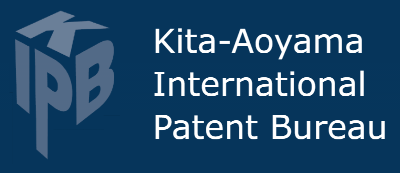Patent System Q&A
7. APPEALS SYSTEM
- Note that divisional applications cannot normally be filed during the appeal stage. However, they can be filed (only) if the original examiner or board of examiners issue an office action during the pre-examination or appeal (Points (ii) above).
- The official fee for requesting an appeal trial is currently JPY49,500 + JPY5,500 per claim. KIPB charges a basic flat-rate fee for filing Appealsdepending on complexity. Contact us for details.
Can you give me an overview of the Appeals system? (timeline/costs/requirements, etc.)?
An applicant who has received a Decision of Rejection and is dissatisfied with the Decision has the right to file an Appeal against the Decision within 3 months (4 months for overseas residents) of the transmittal of a Decision of Rejection (non-extendable)*. An Appeal Board of 3 or 5 new examiners will be appointed for the Appeal. They will consider if the original examiner conducted his / her examination appropriately. Appeals are conducted on a document basis in principle - no oral proceedings are conducted.
(1) Amendment & Pre-examination
The applicant has the option of filing amendments to the specification, drawings, claims, etc., pertaining to the Appeal request. Amendments should be filed at the same time as the appeal request. If amendments are filed, the original examiner will conduct a preliminary re-examination before the appeal proper and will
(i) revoke the original decision and make a decision to grant; or
(ii) issue a new ground for rejection (office action) to which the applicant can respond; or
(iii) decide to uphold the original decision and report findings to the Appeal board which will then begin the Appeal examination.
However, it is important to note that amendments that broaden claims are not permitted. Only amendments for the following purposes can be made at this stage:
i) cancellation of claims,
ii) further restriction of claimed elements (i.e., limitation of claim(s) to components defined in claim(s) before the amendment),
iii) correction of errors; and/or
iv) clarification of ambiguous recitations (that have been rejected in the office action).
(2) Appeal
The Appeal proper begins if no amendments are filed or the pre-examination Examiner has referred the case to the Appeal Board. The Appeal board will issue (i) an allowance, (ii) a new ground for rejection (office action) to which the applicant can respond, or (iii) a decision to maintain the original rejection. Appeal Board rulings can be expected within 6 months to a year.
-- Is it possible to file auxiliary requests at appeal?
No, only one amended set of claims may be filed.
Requesting an interview with an examiner before filing the appeal to discuss the amendment may be possible.
As stated above, examiner(s) may also issue an office action during the preliminary re-examination or appeal proper, offering a chance for further amendment, but applicants and their agents have no control or guarantee over this.
-- Can arguments be filed after filing the appeal?
Yes, it is possible to delay filing arguments (or “appeal brief”) for about a month or two after filing the appeal request. In this case, the JPO will notify the applicant (agent in Japan), requiring submission of the appeal brief within a month/few weeks after the appeal is filed. The appeal brief must then be submitted within 30 days from this notification date.
Note, however, that if an applicant wishes to file claim amendments, these amendments must be filed at the same time as filing the appeal.
-- Can I file a divisional application as a precaution when filing an appeal for an original application?
Yes, we strongly recommend doing so to maintain the prosecution of your invention regardless of the result of the appeal, especially if you are unsure whether an appeal will succeed or restrict the scope of your invention.
According to rules introduced on April 1, 2023, applicants can also request the temporary suspension of the examination of the divisional application until the result of the appeal for the parent.
This provides applicants with opportunities to develop more efficient and effective claim strategies for the divisional application based on the official outcome of the appeal.
For details, see 5.11 Precautionary divisional applications when filing an appeal for parent
(3) Power of Attorney (POA)
A Power of Attorney is also required when filing an appeal. As of June 2021, signatures of representatives of applicants are no longer required on POAs for appeals. Applicants only need to provide the name and job title of a representative to their Japanese agent, who can then file the POA on the applicant’s behalf.
*The applicant also has the right to file a divisional application during the same time period for responding to the Decision of Rejection (with or without filing an appeal for applications on or after April 1, 2007.)
Is there an accelerated appeal examination procedure?
Yes. Although appeal examinations are generally conducted in chronological order (i.e., on the dates on which requests for appeal are received), appeals can be accelerated if an application falls in one or more of the following categories: working invention-related applications, internationally filed applications, academic body applications, small/medium business and individual applications.
According to the JPO, where an accelerated appeal examination is requested, an appeal decision is made and dispatched within 3.7 months (on average) from the date that accelerated appeal examination is requested, and appeal proceeding becomes possible (2017 figures).
A "Written explanation of the needs of the accelerated appeal examination" should be filed with the request for an accelerated appeal examination, in which circumstances related to the filing of the accelerated appeal examination are described, the prior art documents disclosed, and an explanation of the similarities between the invention and the prior art provided (unless the distinguishing features of the claimed invention are already described in the specification.)
There are no extra official fees for requesting an accelerated appeal.
What options do I have if my appeal is rejected?
If a decision to maintain the original rejection is reached by the Appeal Board, the applicant may then institute the lawsuit to the Intellectual Property High Court. For the purposes of the suit, the applicant is considered the plaintiff and the Patent Office commissioner acts as defendant. The scope of the suit is restricted to whether the appeal procedure was undertaken appropriately or not. No amendments or divisional applications are possible.
The applicant should file suit within 30 days from the date the appeal decision was transmitted. Failure to do so results in the application deemed as abandoned and non-revivable.
The court will usually reach a decision within 6 to 12 months from initiating the suit. Fees for suits against an appeal decision can be expensive. Our attorney fees include fees that are consignment on success. Please contact us directly for more details.
It is possible to file appeals to the Japanese Supreme Court against IP high Court decisions in some instances, as the last resort. Greater restrictions and costs apply.
Is it worth filing an appeal after so many rejections?
It can be. Grant rate via appeal is fairly high compared to other main jurisdictions.
In 2020 for instance, around 50% of all applications rejected at the examination stage were subsequently granted in a pretrial re-examination conducted by the original examiner (automatically initiated whenever appeal stage amendments are made. See 7.1 Overview) Furthermore, approx. 70% of those applications rejected in the pretrial re-examination were allowed at the appeal trial proper (conducted by 3 or 5 new examiners).
Should I file a divisional application as a precaution when filing an appeal?
Yes, we strongly recommend filing a precautionary divisional application(s) in conjunction with an Appeal against a Decision of Rejection for the corresponding parent application to maintain the prosecution of your invention regardless of the result of the appeal, especially if you are unsure whether an appeal will succeed or restrict the scope of your invention.
Temporary suspension of the examination of a divsional application whilst the parent is pending at appeal.
According to rules introduced on April 1, 2023, applicants can also request the temporary suspension of the examination of the divisional application until the result of the appeal for the parent.
This not only makes it more convenient for examiners to examine divisional applications with reference to the appeal results, it also provides applicants with opportunities to develop more efficient and effective claim strategies for the divisional application based on the official outcome of the appeal.
Further, since divisional applications cannot be filed after a grant via an appeal, utilizing the suspension of examination also allows applicants to pursue other inventions based on the original disclosure even after an appeal decision or allowance.
What divisional applications are eligible for the suspension procedure?
Applications for which examination requests are filed on or after April 1, 2023, and which meet the following requirements:
(1) The divisional application was filed after a Decision of Rejection (office action) was issued against the parent.
(2) A request for an appeal against the Decision of Rejection has been filed for the parent, and the parent is under pre-appeal re-examination or appeal.
(3) It is advantageous to wait for the result of the pre-appeal re-examination or appeal of the parent.
* Since divsionals can be filed if office actions are issued during the pre-appeal re-examination or appeal stage, these are also eligible for the new practice.
Request procedure
To request suspension of examination of the divisional, an applicant should submit (1) and (2) below to the JPO within five working days from the date the request for examination was filed.
(1) A petition for suspension of examination of the division application (under article 54(1) of the Japanese person act)
(2) A dedicated online form explaining the eligibility of the request.
After filing the request
The JPO will determine whether the divisional application is eligible for the new procedure and notify the applicant. This correspondence will be available to the public.
If eligible, the examination will be suspended for up to three months after any one of the following Appeal stage outcomes of the parent:
(1) A copy of the Decision of allowance during the pre-appeal re-examination stage of the parent is sent to the applicant.
(2) A copy of the first* appeal Decision (grant or rejection) is sent to the applicant.
(3) The request for appeal is withdrawn or dismissed.
After the suspension period ends, examination of the divisional application will commence and proceed as per standard examination procedures for divisionals.
*This does not include a second appeal decision issued due to a lawsuit for revoking the first appeal decision.
** It is not possible to retract the request for suspension of examination.
Outline of examination suspension procedure:

Applicants can also request a resumption of the examination divisional that has been suspended
This should be requested before any of the outcomes (1) to (3) above for the parent. If so, the examination will commence in the same time frame as per regular divisional applications. If not, the ‘up to 3 months after (1) to (3)’ rule above continues to apply.
The applicant will need to submit a request for resumption of examination as well as an online application form. KIPB can advise you on this and carry out the procedure for you.
Note that once a request for resumption of examination is accepted, the applicant cannot file another request to suspend the examination.
Why resume examination?
Applicants who have decided upon a specific scope of claims for the divisional after requesting suspension can have their claims examined in a timely manner and before the outcomes in the appeal stage for the parent.




